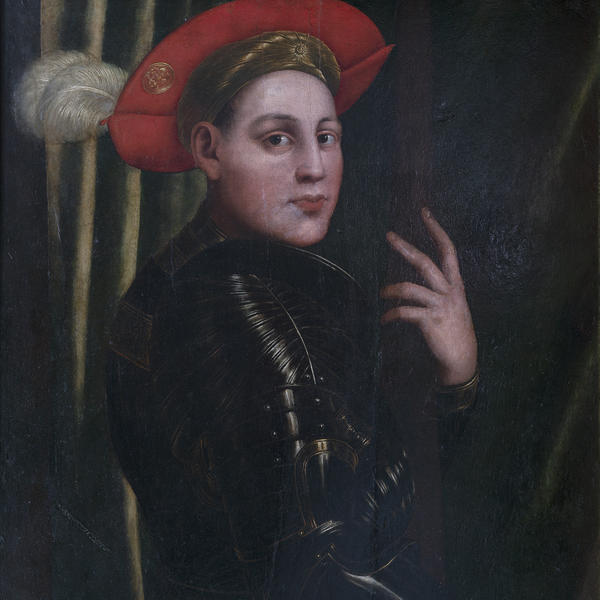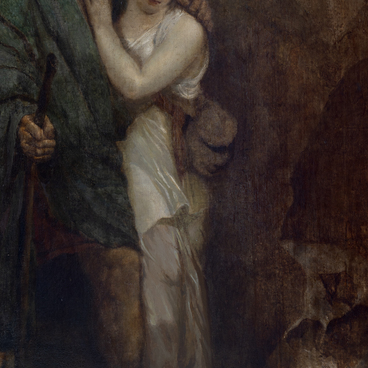The Portrait of a Young Man in Armor is the oldest picture in the collection of West European paintings of the Tyumen Museum and Educational Society. It dates back to the 16th century. Painting played an important role in the Dutch culture of the 16th century. But under the influence of humanistic ideas and the Reformation, religious painting in this period lost its leading importance, giving way to the developing secular genres: portrait, landscape, household genre.
The search for new expressive means, themes and subjects manifested itself in the first third of the 16th century in the development of romanticism, based on the imitation of the Italian examples of the High Renaissance. Artists, novelists sought to bring the Dutch art to the classical tradition. They significantly expanded the theme of painting, using ancient and mythological subjects, they turned to the problems of perspective, complex movement of figures and the construction of monumental compositions. The composition and peculiarities of the pictorial language of the work of an unknown master of the 16th century give an idea of overcoming the old Gothic medieval techniques. In the picture, we see a generational image of a young man in a breastplate — a cuirass, a red beret with a white feather and a golden round brooch. The look is directed at the viewer. The hair is covered with a golden cloth or a metal plate like a turban with a small button in the center. The armor is decorated with strips of golden metal plates. At the bottom, you can partly see the trousers sewn from golden and red fabric. The right hand wrist lies on the sword’s hilt. The left hand, bent in the elbow, holds the brown shaft. The background is a green drapery, on the folds of which, on the left, you can see the golden highlights. Instead of the usual angular posture, it is an attempt to show a natural, lively perspective. Pathetics and drama are replaced by softness and restraint of feelings: on the young man’s face, there is an expression of secular courtesy. Replacing the golden " icon " background there is a try to show the interior. There are attempts to create an air environment that does not hinder the volume of the figure. But in its elongated proportions, rigid and solemnly vertical staging, the connection between the portrait image of a concrete person and religious altar compositions is noticeable.
The search for new expressive means, themes and subjects manifested itself in the first third of the 16th century in the development of romanticism, based on the imitation of the Italian examples of the High Renaissance. Artists, novelists sought to bring the Dutch art to the classical tradition. They significantly expanded the theme of painting, using ancient and mythological subjects, they turned to the problems of perspective, complex movement of figures and the construction of monumental compositions. The composition and peculiarities of the pictorial language of the work of an unknown master of the 16th century give an idea of overcoming the old Gothic medieval techniques. In the picture, we see a generational image of a young man in a breastplate — a cuirass, a red beret with a white feather and a golden round brooch. The look is directed at the viewer. The hair is covered with a golden cloth or a metal plate like a turban with a small button in the center. The armor is decorated with strips of golden metal plates. At the bottom, you can partly see the trousers sewn from golden and red fabric. The right hand wrist lies on the sword’s hilt. The left hand, bent in the elbow, holds the brown shaft. The background is a green drapery, on the folds of which, on the left, you can see the golden highlights. Instead of the usual angular posture, it is an attempt to show a natural, lively perspective. Pathetics and drama are replaced by softness and restraint of feelings: on the young man’s face, there is an expression of secular courtesy. Replacing the golden " icon " background there is a try to show the interior. There are attempts to create an air environment that does not hinder the volume of the figure. But in its elongated proportions, rigid and solemnly vertical staging, the connection between the portrait image of a concrete person and religious altar compositions is noticeable.



